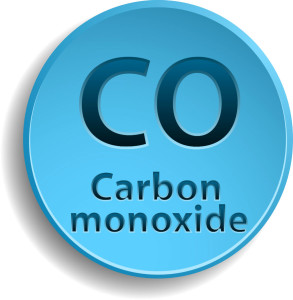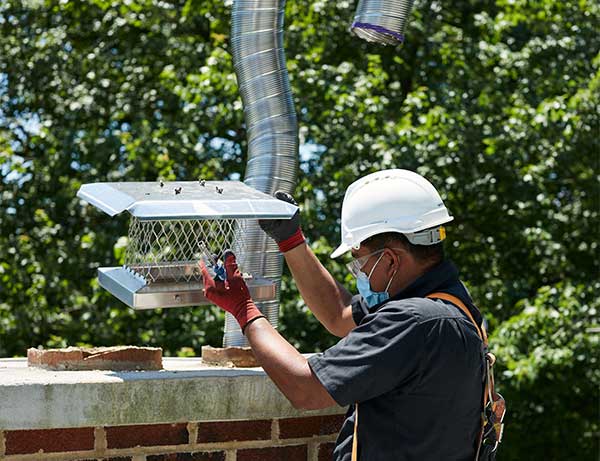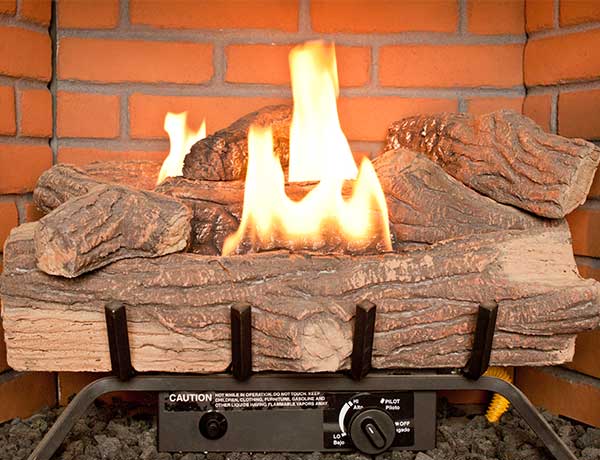 Often known as “the silent killer,” carbon monoxide can leak into your home without you even knowing it. Since this toxic gas is invisible and odorless, there is no way of knowing you are breathing in carbon monoxide unless you have a detector alarm installed in your home. The longer you are exposed to carbon monoxide, the more dangerous it is. The U.S. Consumer Product Safety Commission reports that at least 200 people die every year from carbon monoxide poisoning, and around 10,000 cases of low-level carbon monoxide poisoning injuries are also diagnosed each year. The cause behind many of these carbon monoxide poisoning cases lies with the heating and venting system of a home. This is just one of the reasons why it is so important to have your fireplace and chimney inspected annually. Winston’s Chimney Service would like to share with you some information from the Chimney Safety Institute of America (CSIA) about carbon monoxide and avoiding its hazards.
Often known as “the silent killer,” carbon monoxide can leak into your home without you even knowing it. Since this toxic gas is invisible and odorless, there is no way of knowing you are breathing in carbon monoxide unless you have a detector alarm installed in your home. The longer you are exposed to carbon monoxide, the more dangerous it is. The U.S. Consumer Product Safety Commission reports that at least 200 people die every year from carbon monoxide poisoning, and around 10,000 cases of low-level carbon monoxide poisoning injuries are also diagnosed each year. The cause behind many of these carbon monoxide poisoning cases lies with the heating and venting system of a home. This is just one of the reasons why it is so important to have your fireplace and chimney inspected annually. Winston’s Chimney Service would like to share with you some information from the Chimney Safety Institute of America (CSIA) about carbon monoxide and avoiding its hazards.
How does carbon monoxide affect people?
If there is too much carbon monoxide in your blood, it will kill you. Unfortunately, if your body has a choice between oxygen and carbon monoxide, it would rather choose the toxic gas. Exposure to carbon monoxide creates symptoms similar to the common cold: headaches, nausea, fatigue, and dizziness. These symptoms are so much like the flu and the common cold that low level exposure to carbon monoxide can be difficult to diagnose. If you repeatedly have these symptoms with no improvement, you may want to ask your doctor for a blood test to see if you have been exposed to carbon monoxide. Without a definitive test, you could continue being exposed to this toxic gas until permanent organ damage, or even death, results.
What causes heating and venting systems to leak carbon monoxide?
Since homes today are more air-tight to prevent drafts, there is less fresh air coming into a house and not as many pathways for polluted air to exit. With less fresh air coming in, combustion problems can arise which will lead to the production of carbon monoxide. Additionally, if you have a newer fireplace insert without a fitted flue, there are more spaces where carbon monoxide can easily enter the living areas of your home. Flue blockages from debris and nests from birds or animals can also cause the toxic gas to go back into the home.
How can I avoid carbon monoxide hazards?
Many national safety organizations like the CSIA, the American Lung Association, and the National Fire Protection Association all say the same thing: to avoid the dangers of carbon monoxide, you should have your chimney and venting system professionally inspected every year to be sure the flue is correctly sized, structurally sound, clean, and free of blockages.
Avoid the dangers of carbon monoxide poisoning. Contact us at Winston’s Chimney Service to schedule your annual chimney inspection.



